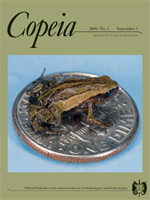Hitherto, aglomerular kidneys have been found in some species within three groups of teleosts: Elopomorpha, Paracanthopterygii, and Percomorpha. Here we report the presence of an aglomerular kidney in the benthopelagic deep-sea fish Ateleopus japonicus (Ateleopodidae: Jellynose fish). The kidney consists of a pair of strap-like bands located in the typical retroperitoneal position. Light microscopic observation of serial longitudinal and cross sections revealed no glomerulus. The kidney is composed of renal tubules, sinusoidal capillaries of the renal portal system, and extensive interstitial lymphoid tissues. Each renal tubule is highly convoluted and surrounded by the well-developed renal portal system. The tubules are well separated within the kidney. An updated species list of teleosts with aglomerular kidneys is presented. Water content of A. japonicus was found to be very high for a marine fish (ca. 90%), and we discuss the functional significance of the aglomerular kidney in A. japonicus in terms of neutral buoyancy.
How to translate text using browser tools
3 September 2009
The Aglomerular Kidney of the Deep-sea Fish, Ateleopus japonicus (Ateleopodiformes: Ateleopodidae): Evidence of Wider Occurrence of the Aglomerular Condition in Teleostei
Chieko Ozaka,
Naoyuki Yamamoto,
Hiroaki Somiya
ACCESS THE FULL ARTICLE

Copeia
Vol. 2009 • No. 3
September 2009
Vol. 2009 • No. 3
September 2009




